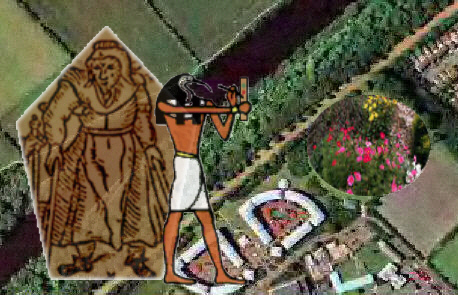|
|
|
Programme: Introduction of Characters by site: Joan Flower, Thoth - The Garden (River Walk at Clifton Campus)
The Clue is N N
– Joan Flower
haunts the Garden of the University when she is not seeking justice at
the Galleries. She is
accompanied, there, by her sometime companion, Thoth.
The Clue for the Gardens is N. Joan:
My Name be Joan Flower, of Bottesford, near Nottingham, and I had
no schoolin’. But since
my death my dear friend, Thoth, hath taught me both to read and write. I
be formerly in the employ of Lady Manners of Belvoir Castle.
Then was I falsely and wretchedly accused of casting death spells
on the children of Lord Francis Manners, Earl of Rutland. Here be what they wrote about me and my daughters:
"[she]
was a monstrous malicious woman, full of oaths, curses, and
imprecations, irreligious, and for anything they saw by her, a plain
atheist, besides of late days her very countenance estranged, her eyes
were fiery and hollow, her speech fell and envious, her demeanor strange
and exotic, and her conversation sequestered; so that the whole course
of her life gave grave suspicion that she was a notorious witch . . .
." Moreover
reports alleged my daughter, Margaret, to be purloining and carrying
provisions out of the Castle, and my other daughter, Phillip, to be
"lewdly transported with the love of one Thomas Simpson, who said
he was bewitched by her"! Since
in my lifetime I came often to Nottingham to market and to the fair and
still haunt these places , I heard of the Learned Sleuths, and wanted
surety that they would find a Book that spoke truth about me
|



